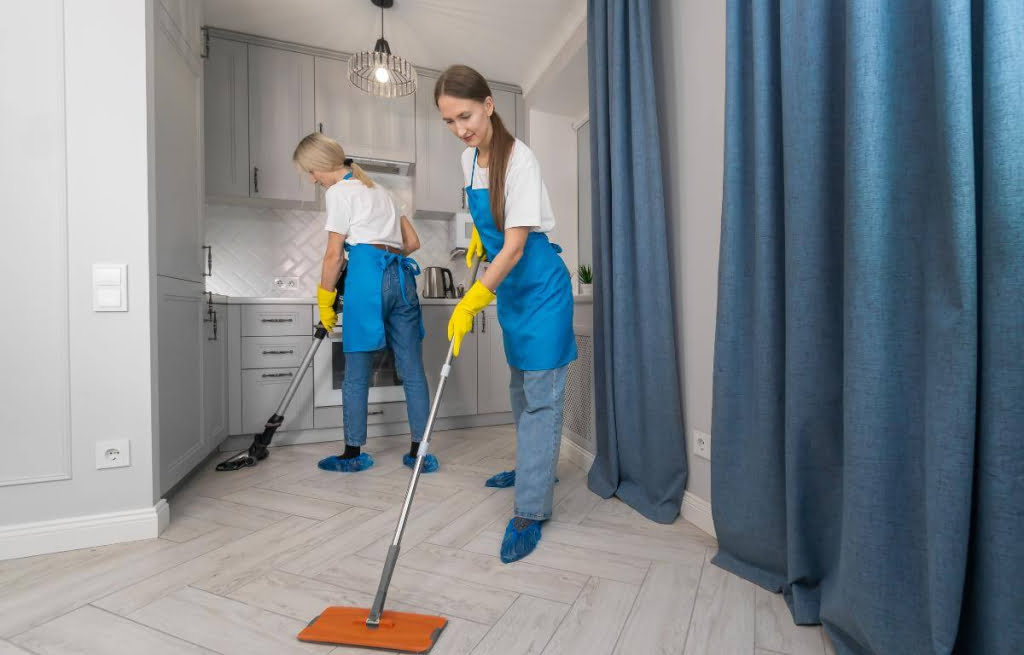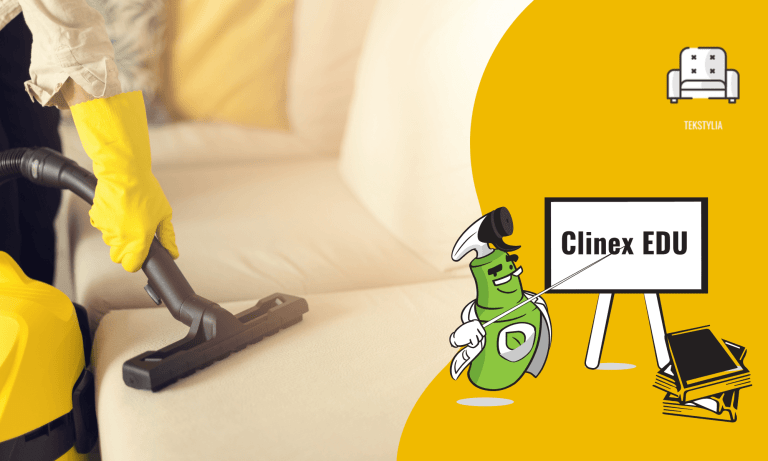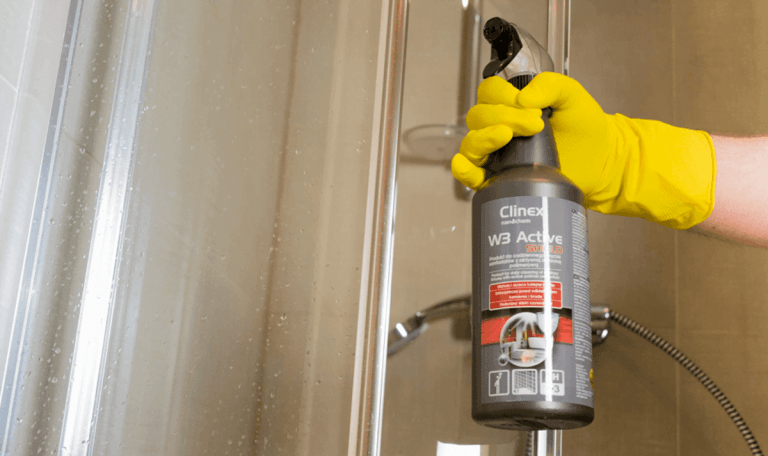In order to effectively fulfill orders for their clients, cleaning companies must select the appropriate cleaning agents and cleaning method. When to choose manual floor cleaning? What are the advantages and disadvantages of this floor cleaning method? What products should be used for manual floor cleaning?
What is hand washing of floors?

First of all, manual floor washing is a traditional method of maintaining cleanliness. It is mainly based on the physical work of the cleaning staff. What is needed for manual washing? When washing floors manually, the cleaning company staff uses basic tools such as mops, cloths or brushes. During the service, the employee manually cleans the surface, adapting the technique to the specific surface and dirt. Where is manual washing effective? This method is especially popular in facilities that are not too large and have many hard-to-reach places.
What are the benefits of hand washing?

There are many advantages to washing floors by hand. What are we talking about? First of all, cleaning staff can adjust the cleaning method to the level of dirt and the type of dirty surface during manual washing. Why is this so important? This is especially important for delicate and sensitive surfaces that can be damaged when working with cleaning machines. What’s more, manual washing allows for thorough cleaning of hard-to-reach places, such as equipment or corners in rooms.
Buying hand washing tools is a very low cost, so even a novice cleaning company can afford to buy the equipment. Additionally, basic cleaning equipment does not generate costs related to the maintenance of cleaning devices. These are therefore large savings that are especially important at the beginning of the business and in the case of small companies.
During cleaning, the cleaning staff member also has more control over the entire cleaning process. Additionally, using efficient cleaning agents, such as products from the Clinex Floral series, Hand washing of floor coverings can be done quickly and efficiently using basic cleaning equipment.
Problems related to manual cleaning

Despite its numerous advantages, hand washing also has significant disadvantages that may affect the achieved effect. What is it about? Hand washing is associated with a large amount of work and a greater amount of time spent on performing the given tasks. In the case of large surfaces, hand washing will take the cleaning staff much more time than in the case of using an appropriate cleaning machine. This in turn will translate into a higher cost of the service, because in such a case more employees must be hired.
Greater consumption of cleaning agents is also a disadvantage of using manual washing. Due to the lack of appropriate dispensers and information on how to properly dose cleaning agents, employees may use much larger amounts of chemicals than are needed to clean the surface.
Hand washing floors – ways to save

There are several ways to economically hand wash your floors . What is it about? First of all, it is worth choosing professional cleaning chemicals , which are stronger and more effective. This translates into saving time and cleaning products, and consequently – saving money. What else can be done? If there is no other way and manual washing is necessary – the cleaning staff should be trained to dose the product according to the manufacturers’ recommendations. This is especially important because it often happens that too much cleaning agent is dosed. It is also worth remembering that low-foaming preparations such as Clinex M6 can be successfully used for everyday washing, both for manual washing and machine washing.
Professional polymer-based office floor cleaner
In summary, hand washing works great for smaller surfaces and does not require large financial outlays. However, it is worth taking care to choose professional cleaning agents and dose them properly. For more advice, we invite you to other articles.
See also:






